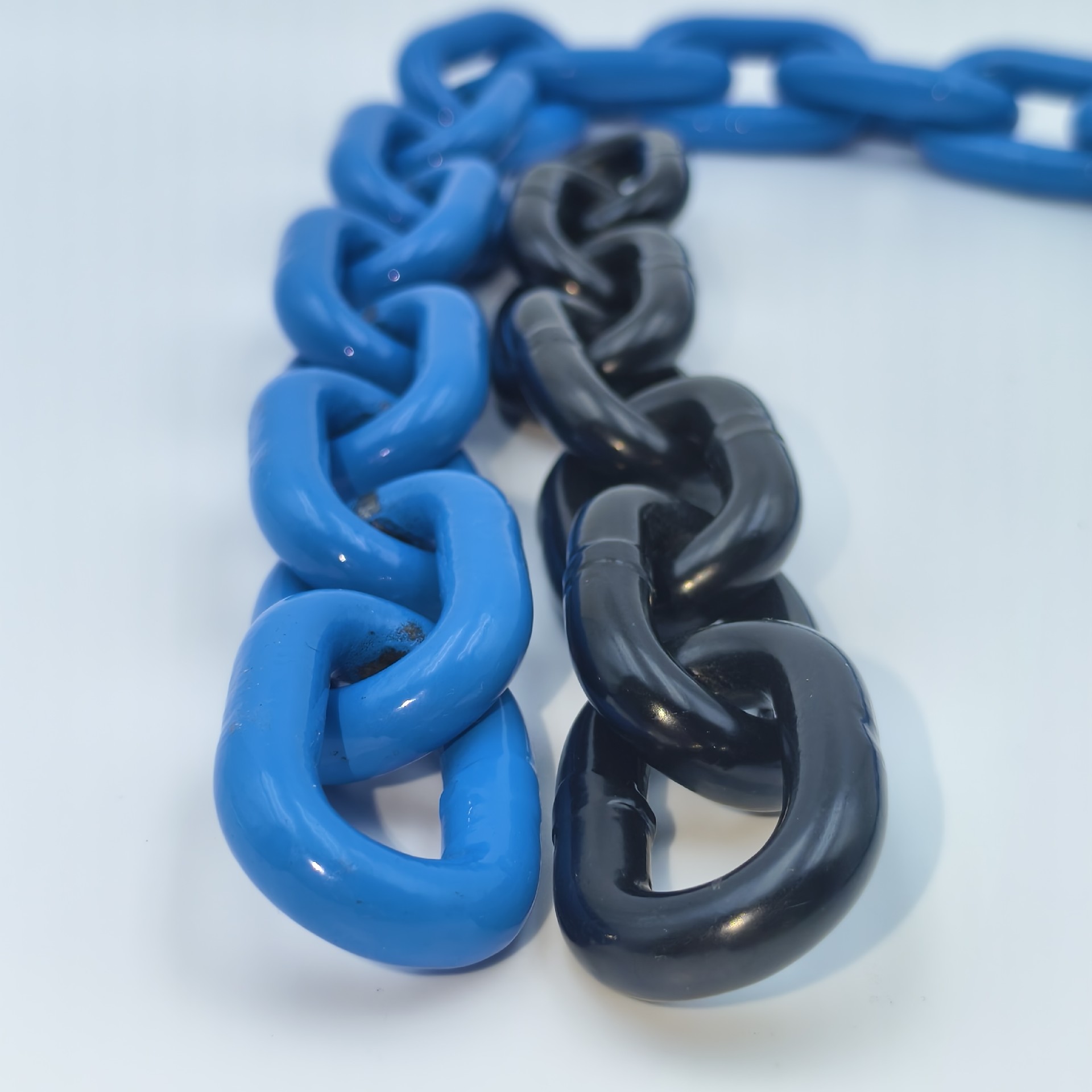Our staff will contact you within 12 hours, You can also contact us through the following ways:
Contact US WhatsApp: +8618766656705
- Email: [email protected]
- Tel: +8618766656705
- Web: https://www.toponechain.com/
Industrial lifting chains are load-carrying members that are intended to withstand heavy loads in construction, mining, and marine works. This guide explores:
Material Science: Metallurgical differences between G100 and G80 alloy chains.
Global Standards: Compliance with ASTM, DIN, and EN standards.
Corrosion Prevention: Zinc-nickel plating vs. stainless steel trade-offs.
Safety Procedures: ASME-recommended rigging procedures.

Property | G100 Chain | G80 Chain |
Tensile Strength | 100,000 psi (Min) | 80,000 psi (Min) |
Material | Medium-carbon alloy steel (0.25-0.35% carbon) | Medium-carbon alloy steel (0.20-0.30% carbon) |
Heat | Quenched & tempered at | Stress-relieved at |
Treatmen | 850-900°C | 600-650°C |
Safety Factor | 4:1 (Critical lifts) | 4:1 (General use) |
G100: Offshore crane operation, aerospace component handling, bridge construction.
G80: Warehouse material transport, agricultural equipment rigging, shipyard docking.
Must have 2× working load limit (WLL) proof testing.
Must have magnetic particle inspection for weld defect.
Specifies tolerance limits of diameters of chain link (±1.5%).
Must have drop testing from 1m height to validate ductility.
Fatigue testing: Chains must be able to go through 20,000+ cycles at 50% WLL.
Must have third-party certification for application at sea.
Alkaline cleaning (pH 12-13) to strip oxides.
Cathodic electrodeposition at 2-4 A/dm².
Post-plating passivation with trivalent chromium.
Salt spray resistance: 720+ hours (as per ASTM B117).
Coefficient of friction: 0.10-0.15 (reduces wear in pulley systems).
Grade | Chromium % | Nickel % | Max Temp | Ideal Use Case |
304 | 18-20 | 8-10.5 | 870°C | Food processing, mild chemical |
| 316 | 16-18 | 10-14 | 925°C | Offshore rigs, chloride-rich environments |
Gear ratio: 3:1 (1ft handle travel = 4in chain tension).
Max leverage: 1,500 lbs manual force → 6,000 lbs chain tension.
Instant tension design for <5 sec adjustment.
Risk factor: Over-tightening could be >15% WLL.
Inspect chain elongation using calipers (replace if >3%).
Inspect for fishmouthing (deformed links) with go/no-go gauges.
Shun shock loading (>2× WLL impact force).
Use spreader bars to prevent chain angles >120°.
Link pitch tolerance: ±2mm per meter.
Mandatory non-destructive testing (NDT) of welded joints.
Case Study: South African gold mines use DIN 22252 chains with 15mm link diameter for 20-ton ore bucket transfers.
Central stud reduces chain entanglement by 40%.
Breaking strength: 1.5× that of open-link chains.
Hot-dip galvanizing (140-μm coating) to ISO 1461.
Oxide layer thickness: 1-3μm (enhances abrasion resistance).
Working temperature range: -40°C to 200°C.
Click on the image for more information: